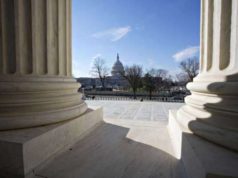
The Lanham Act of 1946, also commonly referred to as the Trademark Act, is the federal legislation in place that controls and regulates trademark laws in the United States. Though several changes or amendments have been to accommodate the evolution of commercialism, technology, and marketing, the legislation still serves as the core fundamentals behind federal trademark laws in the U.S. The Lanham Act was passed into Congress on July 5th, 1946, and signed into federal law by President Harry Truman.
The Lanham Act did not actually take effect until one year later, on July 5th, 1947. The Act took its name from a Congress Representative named Fritz G. Lanham from the state of Texas, who devoted his career to securing a federal trademark law. Trademark laws founded under the Lanham Act include provisions regarding the trademark application process, trademark registration, trademark infringement, and most recently, provisions regarding cyberpiracy and cybersquatting.
Before the Lanham Act of 1946 was passed into legislation, trademark law was governed at the state level, using the concept of Common Law for the recognition and basic protection of trademarks. Common law would give trademark rights upon the actual use of such a mark for commercial purposes, and its rights would be ensured upon the trademark’s recognition as a brand name. However, as it still remains today, common law was only responsible for governing trademark issues at the state level; meaning, a trademark could be used in another state without being found as trademark infringement.
Though federal trademark laws were not as cohesive or extensive as covered by the Lanham Act, they were in effect as far back as the late 19th century. The irony stands that trademarks themselves can be dated back Medieval England, with swordsmiths providing for specific marks to signify authorship of their swords. Yet, federal legislation in the United States concerning trademarks is not evident until after the Civil War.
Rapid evolution of commerce due to Reconstruction prompted for extra provisions to be considered to prevent trademark infringement due to the availability of new products and consumer goods. The first body of legislation at the federal level governing trademark law was passed in 1870. Most of these laws used the patent and copyright clauses provided by the Constitution as their model, but they were soon rejected by the Supreme Court in The Trade-Mark CasesTrademark Act of 1881
The Principal Register
The Supplemental Register
General Provisions
The Madrid Protocol
The first section provides for the rights and protections of trademarks under federal registration statutes. It provides for the basic requirements for eligibility for trademark registration, and a description of the application and registration process. The second provides for a different type of registration, dealing mostly for trademarks that were not considered eligible, but such eligibility may change in the future.
This type of registration provides for some protection in the event that such a trademark can be properly registered. The third section contains all of the restrictions concerning trademarks, namely trademark infringement and the possible scenarios or occurrences of such circumstances. Section four deals with provisions made under international trademark considerations with implications upon United States trademark law.



























